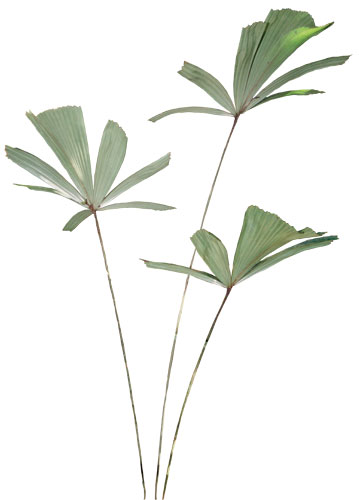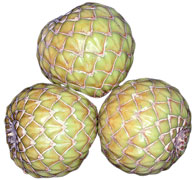- Acanthophoenix
- Acrocomia
- Actinokentia
- Actinorhytis
- Adonidia
- Aiphanes
- Allagoptera
- Ammandra
- Aphandra
- Archontophoenix
- Areca
- Arenga
- Asterogyne
- Astrocaryum
- Attalea
- Bactris
- Balaka
- Barcella
- Basselinia
- Beccariophoenix
- Bismarckia
- Borassodendron
- Borassus
- Brassiophoenix
- Burretiokentia
- Butia
- Calamus
- Calyptrocalyx
- Calyptrogyne
- Calyptronoma
- Carpentaria
- Carpoxylon
- Caryota
- Ceratolobus
- Ceroxylon
- Chamaedorea
- Chamaerops
- Chambeyronia
- Chelyocarpus
- Chuniophoenix
- Clinosperma
- Coccothrinax
- Cocos
- Corypha
- Cryosophila
- Cyphokentia
- Cyphophoenix
- Cyphosperma
- Daemonorops
- Deckenia
- Desmoncus
- Dictyocaryum
- Drymophloeus
- Dypsis
- Elaeis
- Eleiodoxa
- Eremospatha
- Eugeissona
- Euterpe
- Gaussia
- Geonoma
- Guihaia
- Hedyscepe
- Hemithrinax
- Howea
- Hyophorbe
- Hyospathe
- Hyphaene
- Iriartea
- Iriartella
- Itaya
- Jailoloa
- Johannesteijsmannia
- Juania
- Jubaea
- Jubaeopsis
- Kentiopsis
- Kerriodoxa
- Korthalsia
- Laccospadix
- Laccosperma
- Lanonia
- Latania
- Lemurophoenix
- Leopoldinia
- Lepidocaryum
- Lepidorrhachis
- Leucothrinax
- Licuala
- Linospadix
- Livistona
- Lodoicea
- Lytocaryum
- Manicaria
- Manjekia
- Marojejya
- Masoala
- Mauritia
- Mauritiella
- Maxburretia
- Medemia
- Metroxylon
- Myrialepis
- Nannorrhops
- Nenga
- Neonicholsonia
- Neoveitchia
- Nephrosperma
- Normanbya
- Nypa
- Oenocarpus
- Oncocalamus
- Oncosperma
- Orania
- Oraniopsis
- Parajubaea
- Pelagodoxa
- Phoenicophorium
- Phoenix
- Pholidocarpus
- Pholidostachys
- Physokentia
- Phytelephas
- Pigafetta
- Pinanga
- Plectocomia
- Plectocomiopsis
- Podococcus
- Pogonotium
- Ponapea
- Prestoea
- Pseudophoenix
- Ptychococcus
- Ptychosperma
- Raphia
- Ravenea
- Reinhardtia
- Retispatha
- Rhapidophyllum
- Rhapis
- Rhopalostylis
- Roscheria
- Roystonea
- Sabal
- Sabinaria
- Salacca
- Saribus
- Satakentia
- Satranala
- Schippia
- Sclerosperma
- Socratea
- Solfia
- Sommieria
- Syagrus
- Synechanthus
- Tahina
- Tectiphiala
- Thrinax
- Trachycarpus
- Trithrinax
- Veitchia
- Verschaffeltia
- Voanioala
- Wallaceodoxa
- Wallichia
- Welfia
- Wendlandiella
- Wettinia
- Wodyetia
- Zombia
- x Jubautia splendens
- ?? Acoelorrhaphe
- ?? Bentinckia
- ?? Brahea
- ?? Clinostigma
- ?? Colpothrinax
- ?? Copernicia
- ?? Cyrtostachys
- ?? Dictyosperma
- ?? Dransfieldia
- ?? Heterospathe
- ?? Hydriastele
- ?? Iguanura
- ?? Incertae sedis & excluded names
- ?? Loxococcus
- ?? Micronoma
- ?? Paripon
- ?? Pritchardia
- ?? Rhopaloblaste
- ?? Serenoa
- ?? Washingtonia
About Palms: Introduction
Introduction
Classification
Phylogeny
Introduction
 The palm family (Palmae or Arecaceae - both names are permitted) is a large and diverse family of iconic monocotyledonous flowering plants. It is distributed throughout tropical and subtropical areas of the world, but it is most diverse in highly threatened moist tropical forest habitats. The family comprises 188 genera and approximately 2,585 species. These are unevenly divided among the Americas (ca. 730 species), Africa (ca. 65 species), and the Asia-Pacific region (ca. 1,600 species). Palms are highly conspicuous in tropical ecosystems. Due to their diversity, abundance and interactions, many species play key ecological roles. They provide numerous ecosystem services and are of great economic importance, ranking third after grasses and legumes in usefulness. The majority of palm resources are extracted from the wild and exploited at subsistence levels, but several are major crops, e.g. coconut, date, betel nut, and oil palm. Palms are also famous for holding biological records, including the largest self-supporting leaves (25 m+ in Raphia regalis), the largest seed (up to 25 kg in Lodoicea maldivica), and the largest inflorescence (8 m tall with 24 million flowers in Corypha umbraculifera).
The palm family (Palmae or Arecaceae - both names are permitted) is a large and diverse family of iconic monocotyledonous flowering plants. It is distributed throughout tropical and subtropical areas of the world, but it is most diverse in highly threatened moist tropical forest habitats. The family comprises 188 genera and approximately 2,585 species. These are unevenly divided among the Americas (ca. 730 species), Africa (ca. 65 species), and the Asia-Pacific region (ca. 1,600 species). Palms are highly conspicuous in tropical ecosystems. Due to their diversity, abundance and interactions, many species play key ecological roles. They provide numerous ecosystem services and are of great economic importance, ranking third after grasses and legumes in usefulness. The majority of palm resources are extracted from the wild and exploited at subsistence levels, but several are major crops, e.g. coconut, date, betel nut, and oil palm. Palms are also famous for holding biological records, including the largest self-supporting leaves (25 m+ in Raphia regalis), the largest seed (up to 25 kg in Lodoicea maldivica), and the largest inflorescence (8 m tall with 24 million flowers in Corypha umbraculifera).

Palms are immediately recognizable, even to inexperienced field workers. Their monophyly is well supported by various studies – in other words, they form a well-supported “natural” group. Contrary to some classifications (e.g. Cronquist, 1981), which linked the palms to the Araceae, Cyclanthaceae and Pandanaceae, it is now clear that the family falls within the commelinid monocots, a group that also includes grasses, gingers, and bromeliads, although the precise relationships of palms with other commelinid lineages remains uncertain. Despite being so well-defined, few characters of palms are unique to the family, being shared also by other monocot families. Their mode of leaf development is the most readily observed unique feature of palms. The way palm leaves develop as a folded, but undivided structure in bud and become compound by splitting during expansion is unique among flowering plants.

